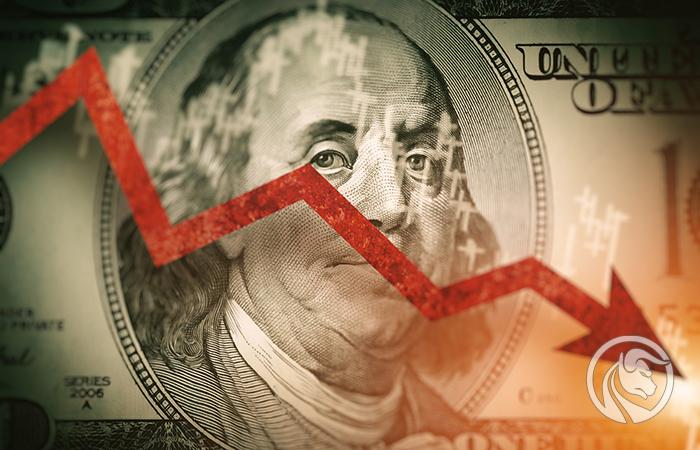Volatility during US inflation and expectations for key data
Markets in Europe enjoyed a positive, albeit cautious, start to the week FTSE100 recorded a new record close, helped by European natural gas prices, which fell to their lowest level in almost 18 months.
US markets were also reasonably optimistic after last week's loss, with gains pretty solid across all sectors ahead of today's report on CPI inflation for January in the US.
Asian markets had a mixed session after the Japanese government nominated Kazuo Ueda as the next CEO Bank of Japanwhen Kuroda leaves in April, with the Japanese yen rising slightly as speculation continues as to whether he will be more hawkish than his predecessor. European markets opened without major changes.
The market is waiting
Today's report is expected to be an important indicator of how many more 25 basis point hikes may follow as the Fed looks to bring inflation back to 2%.
Earlier we will know the data on earnings and unemployment in the UK for the three months to December. Unemployment is expected to remain unchanged at 3,7%, but wages will continue to rise from 6,4% in November, it seems, to 6,5%, and possibly even higher. Wage growth across the country remains well above 10%, suggesting that regardless of how CPI performs on tomorrow's data release, the Bank of England is unlikely to have an easier time with the prospect of at least two more rate hikes in coming months.
Disinflation trends in the US
The US headline CPI has been on a downward trend for several months, to the point that the chairman Fed J. Powell at the last meeting of the Fed admitted that there are some disinflationary tendencies in the US economy, which was not an unfounded observation.
Nevertheless, Powell's comments had the markets dreaming of interest rate cuts before the end of the year, which then hit a wall with the sensational US payrolls report (517 in January) earlier this month. The milder weather in January also seems to have resulted in a bit more employment, along with slightly higher prices, which may continue for several months and as such may start to slow down the rate of decline in prices.
In December, the US CPI index slowed to 6,5%, core prices fell to 5,7% from 6%, and the markets were pricing in another cut in the Fed's interest rate hike cycle to 25 bp. Today's data for January may somewhat reinforce the more hawkish comments we've seen from various Fed officials since the January rate meeting, and further shake up US stock markets. While US 12-year bond yields have jumped sharply over the past week, US stock markets still appear to be operating on a rate cut over the next XNUMX months.
It should also be noted that the recent ISM Services report has bolstered the resilience of the US Employment Report, as well as the resilience of Prices Paid, which peaked at 67,8. Wage growth also looks strong, particularly in the hospitality and leisure industries.
This price stability is likely to be reflected in a similar increase in inflationary pressures, with the headline CPI expected to rise by 0,4% m/m and 6,2% year-on-year.
How can the currency and stock market react?
In terms of implied volatility for the FX market, the greatest volatility seems to be priced in for the pair USD / JPY, where the fluctuation range can be over 200 pips. This is the highest expected volatility among major currencies. On the other hand, volatility on a pair is valued in second place GBP / USD with a fluctuation range of close to 170 pips. Around 140 pips of volatility is estimated on the pair EUR / USD.
#FX implied volatility for today, i.e. with data #ICC #inflation from the USA, can be significantly increased.
Valued volatility for #Nasdaq it is about 3,5 percent.
More about today's publication and more, in a moment in the comment to this tweet pic.twitter.com/twGeKUeOGw
— CMC Markets Polska (@CMCMarkets_PL) February 14, 2023
Meanwhile, on stock exchanges, the expected volatility for the Nasdaq 100 index may reach almost 4 percent, while for the S&P 500 around 3 percent. Therefore, investors seem to assume that these data may be very important for the market.






















![Forex Club – Tax 9 – Settle tax on a foreign broker [Download the Application] Forex Club - Tax 9](https://forexclub.pl/wp-content/uploads/2024/02/Forex-Club-Podatek-9-184x120.jpg?v=1709046278)
![Trading View platform – solutions tailored to the needs of traders [Review] trading view review](https://forexclub.pl/wp-content/uploads/2024/03/trading-view-recenzja-184x120.jpg?v=1709558918)
![How to connect your FP Markets account to the Trading View platform [Guide] fp markets trading view](https://forexclub.pl/wp-content/uploads/2024/02/fp-markets-trading-view-184x120.jpg?v=1708677291)
![How to invest in ChatGPT and AI? Stocks and ETFs [Guide] how to invest in chatgpt and artificial intelligence](https://forexclub.pl/wp-content/uploads/2023/02/jak-inwestowac-w-chatgpt-i-sztuczna-inteligencje-184x120.jpg?v=1676364263)


![WeWork – the anatomy of the collapse of a company valued at $47 billion [WeWork, part II] wework bankruptcy story](https://forexclub.pl/wp-content/uploads/2024/04/wework-bankructwo-historia-184x120.jpg?v=1711729561)
![Adam Neumann – the man who screwed up Softbank [WeWork, part AND] adam neumann wework](https://forexclub.pl/wp-content/uploads/2024/04/adam-neumann-wework-184x120.jpg?v=1711728724)





![How to transfer shares to another brokerage office [Procedure description] how to transfer shares to another brokerage house](https://forexclub.pl/wp-content/uploads/2024/03/jak-przeniesc-akcje-do-innego-biura-maklerskiego-184x120.jpg?v=1709556924)

![The most common mistakes of a beginner trader - Mr Yogi [VIDEO] Scalping - The most common mistakes of a beginner trader - VIDEO](https://forexclub.pl/wp-content/uploads/2024/03/Scalping-Najczestsze-bledy-poczatkujacego-tradera-VIDEO-184x120.jpg?v=1711601376)
![Learning patience: No position is also a position - Mr Yogi [VIDEO] Scalping - Learning patience - No position is also a position - VIDEO](https://forexclub.pl/wp-content/uploads/2024/03/Scalping-Nauka-cierpliwosci-Brak-pozycji-to-tez-pozycja-VIDEO-184x120.jpg?v=1710999249)
![When to exit a position and how to minimize losses - Mr Yogi [VIDEO] Scalping - When to exit a position and how to minimize losses - VIDEO](https://forexclub.pl/wp-content/uploads/2024/03/Scalping-Kiedy-wyjsc-z-pozycji-i-jak-minimalizowac-straty-VIDEO-184x120.jpg?v=1710336731)

















